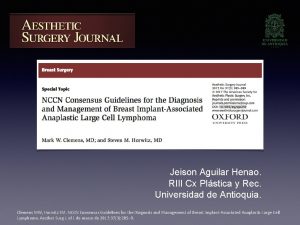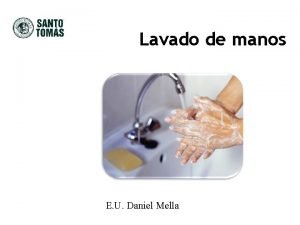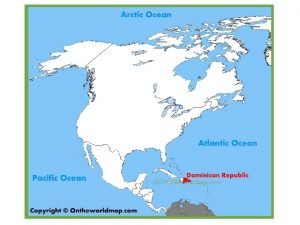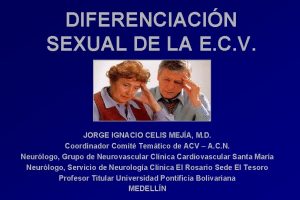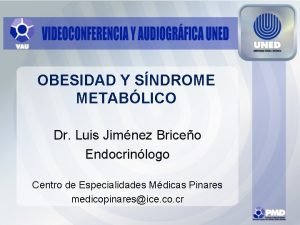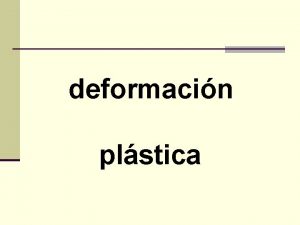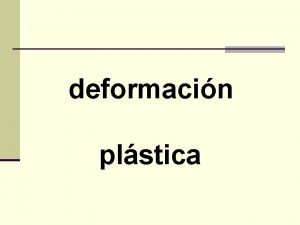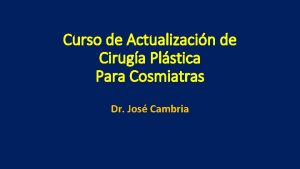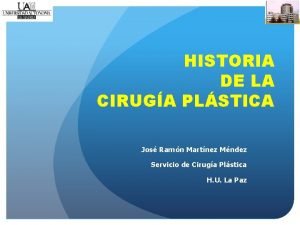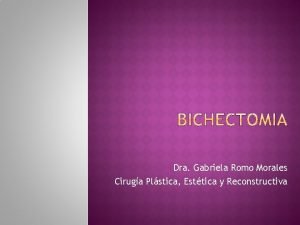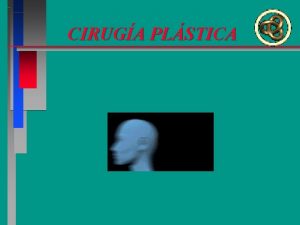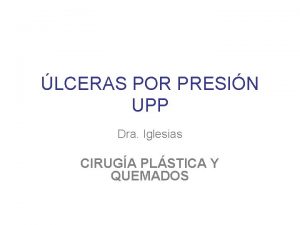Natalia Mejia Jimenez Residente segundo ao Ciruga plstica












- Slides: 12

Natalia Mejia Jimenez Residente segundo año Cirugía plástica

Introduction Patients with macromastia: • Aesthetic • Pain control • Quality of life Macromastia or gigantomastia – Obesity Well known risk factors: • Smoking • Diabetes • Obesity? • Studies available: single center, small patient pool and surgeon specific bias • Meta-analysis improve evidence and clarify relationship.

Picot • P: macromastia • I: reduction mammaplasty in obese patients • C: reduction mammaplasty in non obese patients • O: surgical complications • T: 90 days minimum follow up

Methods • February and June of 2015 • Articles not included in databases were searched (references of other articles) • Inclusion criteria: 1. Outcome analysis of reduction mammaplasty 2. Minimum follow up: 90 days 3. Reporting data BMI 4. Minimum study of 30 patients 5. Clear statements regarding complications • Exclusion criteria: 1. Animal or in vivo 2. No reporting BMI or weight 3. Missing data on complications 4. Oncologic breast conserving surgery 5. Text not written in english • Types of complications reported • No mayor complications • Quality of studies by Newcastle Ottawa scale (star system)

Results

Results • 15 yes vs. 11 no differences • Cutoff point: Manahan 35 Kg/m 2 doubles risk Gust 39 Kg/m 2 Chun 35. 6 Kg/m 2 OR>2 Meta-analysis: 12 articles rated as high quality (NOS star assessment) (Chen et al excluded due to method of diagnosis) Total: 6904 patients (3752 vs. 3152)

Results

Results Subgroup analysis (surgical complications)

Results Subgroup analysis (tissue necrosis)

Discussion • Complication rate analysis to determine risk/benefit of procedure • Obesity is not a ¨well known¨ risk factor • Few reports on serious medical complications • Consider conservative surgical planning • Reduction mammaplasty does not specifically carry a high risk (studies with other pathologies showed similar outcomes) *morbid obesity • Surgery show positive effect on additional weight loss

Study limitations • Observational studies • Potential confounders not considered (smoking and resection weight) • No assessment for specific surgical complications or surgical methods • Heterogeneity

Conclusions • Most patients that need reduction mammaplasty are overweight/obese. • Careful patient selection. • Conservative surgical approach.
